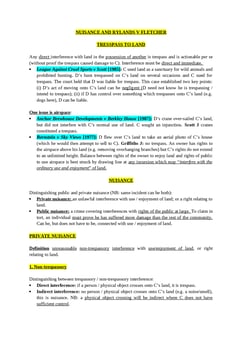Bonnington Castings Ltd v Wardlaw [1956] AC 613; [1956] 2 WLR 707; [1956] 1 All ER 615
Judgement for the case Bonnington Castings Ltd v Wardlaw
Table Of Contents
KEY POINTS
-
A factory is the heart of industrial activity.
When harm occurs, proving legal responsibility falls on the concerned parties.
-
Breach of statutory duty is failing to meet legal obligations, often resulting in injury.
Causes of harm, like exposure to silica dust in industries such as metal grinding, can lead to conditions like pneumoconiosis.
Determining if harm resulted from a breach of duty requires establishing causation. Regulations, such as the Grinding of Metals (Miscellaneous Industries) Regulations, 1925, guide such processes.
Closure of a factory initiates the process of elimination, involving dismantling or repurposing. Amidst this, the onus of proof remains crucial in resolving legal matters.
FACTS
-
John Harkness Wardlaw (“Steel Dresser”) was employed in an environment where he was regularly exposed to silica dust.
This exposure stemmed from the pneumatic hammer he operated and the swing grinders used in his work.
Although it was understood that no dust extraction plant could effectively mitigate dust from the hammer, the swing grinders were equipped with such apparatus.
-
Bonnington Castings Ltd (“Owners”) failed to maintain the extraction equipment, rendering it ineffective.
Consequently, the factory owners breached their statutory duty outlined in Regulation 1 of the Grinding of Metals (“Miscellaneous Industries”) Regulations, 1925.
As a result of his occupational exposure, the Steel Dresser developed pneumoconiosis.
Subsequently, he pursued legal action against the factory owners, seeking damages for the harm suffered during his employment.
JUDGEMENT
The court held that the onus of proof rested on the Steel Dresser to demonstrate, by the usual standard of proof in civil actions, that the breach of statutory duty at least contributed to the injury on a balance of probabilities, rather than merely showing a possibility of causation.
Based on the evidence presented, it was determined that the dust emitted from the swing grinders materially contributed to the disease's development.
As a result, the decision of the First Division of the Court of Session was affirmed.
COMMENTARY
-
This case highlights the intricate legal dynamics surrounding industrial harm and the subsequent pursuit of justice. It emphasizes factories' role in industrial activity and the legal framework dictating responsibility in harm cases.
Breach of statutory duty, particularly concerning regulations like the Grinding of Metals (Miscellaneous Industries) Regulations, 1925, underscores the obligations imposed on factory owners to ensure workplace safety.
-
The Steel Dresser case serves as a poignant example, illustrating the consequences of inadequate safety measures and the resultant harm suffered by employees.
Despite awareness of potential hazards and the availability of mitigation measures for swing grinders, the neglectful maintenance of extraction equipment led to a breach of statutory duty.
The development of pneumoconiosis due to occupational exposure underscores the severe health risks associated with workplace negligence.
-
Legal recourse becomes essential for individuals like the steel dresser seeking redress for their suffering.
However, the burden of proof on the plaintiff adds complexity to the legal process, requiring a demonstration of causation on a balance of probabilities rather than mere possibility.
In this case, the court's affirmation of the steel dresser's claim highlights the evidence's significant role in establishing liability and securing compensation for harm caused by breaches of statutory duty.
The case reflects the importance of robust regulatory frameworks, diligent workplace safety practices, and equitable legal proceedings in ensuring the protection of workers and accountability for industrial harm.
For Further Study on Bonnington Castings Ltd v Wardlaw
Need instant answers? Our AI exam tutor is here to help.
Ask questions 🙋 Get answers 📔 It's simple 👁️👄👁️
Our AI is educated by the highest scoring students across all subjects and schools. Join hundreds of your peers today.
Get StartedSimilar Cases
Related Product Samples
These product samples contain the same concepts we cover in this case.

